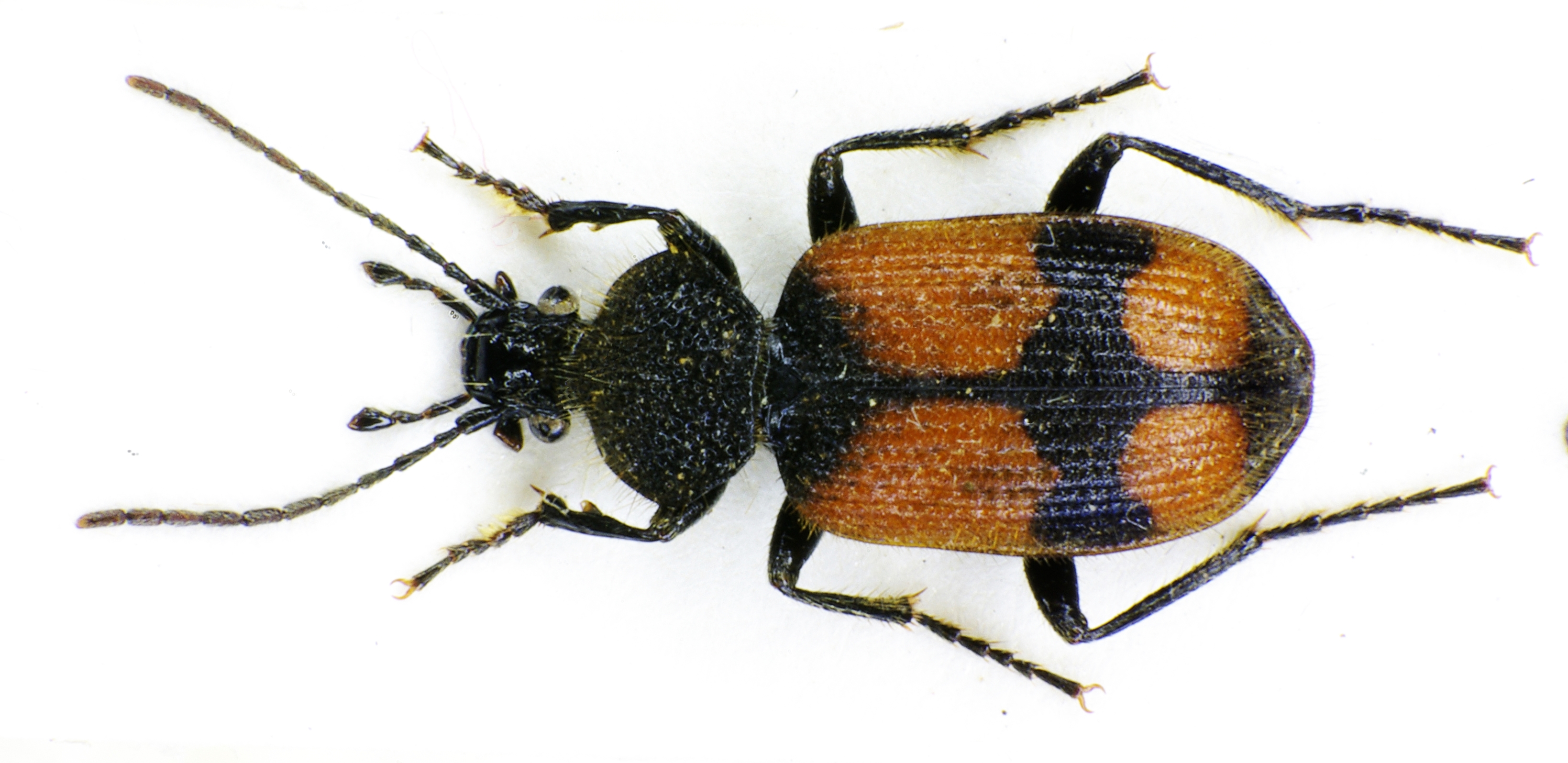|
Macrocheilus Biplagiatus
''Macrocheilus biplagiatus'' is a species of ground beetle in the subfamily Anthiinae Anthias are members of the family Anthiadidae in the order Perciformes. The group has also been called Anthiidae or Anthiinae, but these names are preoccupied by a subfamily of ground beetles in the family Carabidae erected by Bonelli in 1813 .... It was described by Boheman in 1848. References Anthiinae (beetle) Beetles described in 1848 Taxa named by Carl Henrik Boheman Beetles of Africa {{AnthiinaeBeetle-stub ... [...More Info...] [...Related Items...] OR: [Wikipedia] [Google] [Baidu] |
Ground Beetle
Ground beetles are a large, cosmopolitan distribution, cosmopolitan family (biology), family of beetles, the Carabidae, with more than 40,000 species worldwide, around 2,000 of which are found in North America and 2,700 in Europe. As of 2015, it is one of the 10 most species-rich animal families. They belong to the Adephaga. Members of the family are primarily Carnivore, carnivorous, but some members are Herbivore, herbivorous or Omnivore, omnivorous. Description and ecology Although their body shapes and coloring vary somewhat, most are shiny black or metallic and have ridged wing covers (elytra). The elytra are fused in some species, particularly the large Carabinae, rendering the beetles unable to fly. The species ''Mormolyce phyllodes'' is known as violin beetle due to their peculiarly shaped elytra. All carabids except the quite primitive flanged bombardier beetles (Paussinae) have a groove on their arthropod leg, fore leg tibiae bearing a comb of hairs used for cleaning the ... [...More Info...] [...Related Items...] OR: [Wikipedia] [Google] [Baidu] |
Anthiinae (beetle)
Anthiinae is a subfamily of beetles in the family Carabidae, containing the following genera: ; Tribe Anthiini Bonelli, 1813 : '' Anthia'' Weber, 1801 (Africa and southwest Asia) : '' Atractonotus'' Perroud, 1847 (Africa) : '' Baeoglossa'' Chaudoir, 1850 (Africa) : '' Cycloloba'' Chaudoir, 1850 (Africa) : '' Cypholoba'' Chaudoir, 1850 (Africa) : '' Eccoptoptera'' Chaudoir, 1878 (Africa) : '' Gonogenia'' Chaudoir, 1844 (Africa) : '' Netrodera'' Chaudoir, 1850 (Africa) ; Tribe Helluonini Hope, 1838 : Subtribe Helluonina Hope, 1838 :: '' Aenigma'' Newman, 1836 (Australia) :: '' Ametroglossus'' Sloane, 1914 (Australia) :: '' Dicranoglossus'' Chaudoir, 1872 (Australia) :: '' Epimicodema'' Sloane, 1914 (Australia) :: '' Gigadema'' J.Thomson, 1859 (Australia) :: '' Helluapterus'' Sloane, 1914 (Australia) :: '' Helluarchus'' Sloane, 1914 (Australia) :: '' Helluo'' Bonelli, 1813 (Australia) :: '' Helluodema'' Laporte, 1867 (Australia, Indonesia, New Guinea) :: '' Helluo ... [...More Info...] [...Related Items...] OR: [Wikipedia] [Google] [Baidu] |
Beetles Described In 1848
Beetles are insects that form the order Coleoptera (), in the superorder Holometabola. Their front pair of wings are hardened into wing-cases, elytra, distinguishing them from most other insects. The Coleoptera, with about 400,000 described species, is the largest of all orders, constituting almost 40% of described arthropods and 25% of all known animal species; new species are discovered frequently, with estimates suggesting that there are between 0.9 and 2.1 million total species. However, the number of beetle species is challenged by the number of species in dipterans (flies) and hymenopterans (wasps). Found in almost every habitat except the sea and the polar regions, they interact with their ecosystems in several ways: beetles often feed on plants and fungi, break down animal and plant debris, and eat other invertebrates. Some species are serious agricultural pests, such as the Colorado potato beetle, while others such as Coccinellidae (ladybirds or ladybugs) eat aphids ... [...More Info...] [...Related Items...] OR: [Wikipedia] [Google] [Baidu] |
Taxa Named By Carl Henrik Boheman
In biology, a taxon (back-formation from ''taxonomy''; : taxa) is a group of one or more populations of an organism or organisms seen by taxonomists to form a unit. Although neither is required, a taxon is usually known by a particular name and given a particular ranking, especially if and when it is accepted or becomes established. It is very common, however, for taxonomists to remain at odds over what belongs to a taxon and the criteria used for inclusion, especially in the context of rank-based (" Linnaean") nomenclature (much less so under phylogenetic nomenclature). If a taxon is given a formal scientific name, its use is then governed by one of the nomenclature codes specifying which scientific name is correct for a particular grouping. Initial attempts at classifying and ordering organisms (plants and animals) were presumably set forth in prehistoric times by hunter-gatherers, as suggested by the fairly sophisticated folk taxonomies. Much later, Aristotle, and later still ... [...More Info...] [...Related Items...] OR: [Wikipedia] [Google] [Baidu] |


